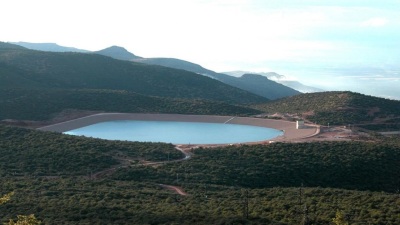
Polypropylene VS Polyester Geotextiles
Brief
Polypropylene (PP) and Polyester (PET) geotextiles are made from a synthetic fiber that is strong and durable, yet lightweight and flexible. They are resistant to UV light, chemicals, and rot, making them ideal for use in outdoor applications. They are also non-toxic and non-allergenic, making them safe for use in sensitive environments. Additionally, they are highly permeable, allowing water to pass through while still providing a barrier against soil erosion.
They are two types of geotextiles used in a variety of engineering applications. Polypropylene geotextiles are made from polypropylene fibers and are known for their strength and durability. They are often used in drainage, filtration, and reinforcement applications. Polyester geotextiles are made from polyester fibers and are known for their high tensile strength and excellent permeability. They are often used in applications such as erosion control and soil stabilization. Both types of geotextiles are available in various weights and sizes and can be used in a wide range of applications.
Polypropylene Geotextile
The Advantages Of Polypropylene Geotextile
The main advantages of polypropylene geotextiles are that they are strong and durable, yet lightweight and flexible. They are resistant to UV light, chemicals, and rot, making them ideal for use in outdoor applications. Additionally, they are non-toxic and non-allergenic, making them safe for use in sensitive environments. Furthermore, they are highly permeable, allowing water to pass through while still providing a barrier against soil erosion.
The Disadvantages Of Polypropylene Geotextile
The main disadvantages of polypropylene geotextiles are that they are not as flexible as polyester geotextiles, making them less suitable for indoor applications. Additionally, they are not as resistant to UV light, chemicals, and rot as polyester geotextiles, making them less suitable for outdoor use in certain applications. Furthermore, they are not as permeable as polyester geotextiles, making them less suitable for applications that require high levels of permeability.
The Applications Of Polypropylene Geotextile
Polypropylene geotextiles are commonly used in outdoor applications, such as landscaping, erosion control, and road construction. They are also used in indoor applications, such as filtration and drainage. Additionally, they are used in the manufacture of carpets, furniture, and other household items. Furthermore, they are used in the construction of dams, canals, and other water-related structures.
Polyester Geotextile
The Advantages Of Polyester Geotextile
The main advantages of polyester geotextiles are that they are lightweight and flexible, making them ideal for indoor applications. They are also non-toxic and non-allergenic, making them safe for use in sensitive environments. Additionally, they are highly permeable, allowing water to pass through while still providing a barrier against soil erosion. Furthermore, they are resistant to UV light, chemicals, and rot, making them suitable for outdoor use in certain applications.
The Disadvantages Of Polyester Geotextile
The main disadvantages of polyester geotextiles are that they are not as strong and durable as polypropylene geotextiles. Additionally, they are not as resistant to UV light, chemicals, and rot as polypropylene geotextiles, making them less suitable for outdoor use in certain applications. Furthermore, they are not as permeable as polypropylene geotextiles, making them less suitable for applications that require high levels of permeability.
The Applications Of Polyester Geotextile
Polyester geotextiles are commonly used in indoor applications, such as filtration and drainage. They are also used in the manufacture of carpets, furniture, and other household items. Additionally, they are used in the construction of dams, canals, and other water-related structures. Furthermore, they are used in outdoor applications, such as landscaping, erosion control, and road construction.
Summary
the polyester synthetic staple fibers nonwoven needle-punched geotextiles have some advantages over polypropylene synthetic staple fibers nonwoven needle-punched geotextiles. Polyester has a higher melting point than polypropylene and is more resistant to aging and acid and alkali. It also has a higher specific gravity than polypropylene, which makes it more suitable for use in water engineering projects.







